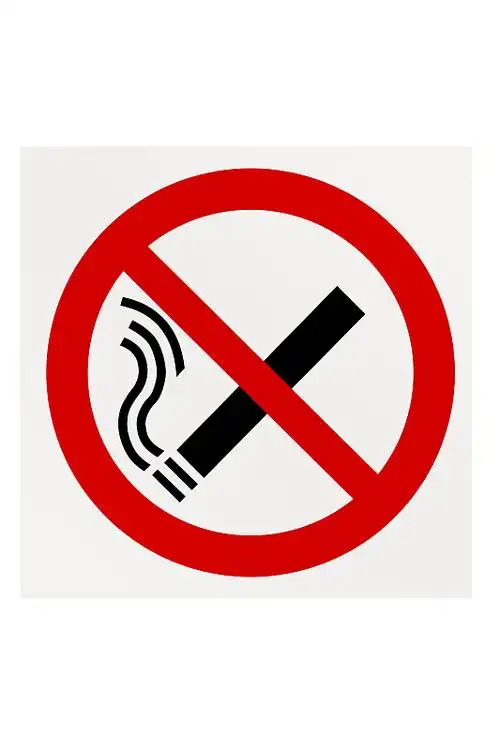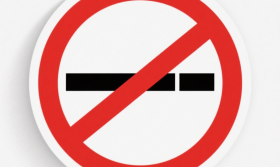The Unseen Casualty: How Secondhand Smoke Infiltrates Our Museums and Endangers Cultural Stewards
Museums are often described as sanctuaries. They are hallowed halls where we commune with history, art, and science, protected from the elements and the rush of modern life. We trust these institutions to safeguard priceless artifacts, but there is a silent, insidious threat that often goes unaddressed: the danger posed to the very people who make these places run—the museum staff. While we actively control temperature, humidity, and light to preserve objects, the pervasive risk of secondhand smoke exposure for employees remains a critical, and frequently overlooked, issue of occupational health and safety.

When we think of secondhand smoke, images of smoky bars or crowded outdoor areas might come to mind. We rarely picture the serene, educational environment of a museum. However, the threat doesn't always billow visibly at the main entrance. The primary pathways for this contamination are often the very people who visit and work in these spaces. Thirdhand smoke—the toxic residue that clings to hair, skin, clothing, and personal belongings long after a cigarette has been extinguished—is a stealthy carrier. A security guard spending hours in a confined ticket booth, a curator meticulously handling a delicate textile, or an educator leading a group of young students can all be exposed to the complex cocktail of carcinogens and toxic chemicals brought in from the outside.
This isn't a minor inconvenience; it's a significant public health hazard with profound implications for museum workers' health. The science is unequivocal. Secondhand smoke contains over 7,000 chemicals, hundreds of which are toxic, and about 70 can cause cancer. For the museum employee, constant or repeated exposure to these toxins significantly elevates their risk of developing serious health conditions. We are talking about an increased risk of lung cancer, even for someone who has never smoked a day in their life. Heart disease is another major concern, as the chemicals in secondhand smoke can immediately damage the lining of blood vessels and make blood more likely to clot, leading to heart attacks.
The health consequences extend beyond these life-threatening diseases. The immediate effects of secondhand smoke exposure for museum employees can include eye irritation, headaches, nasal discomfort, and sore throats. For staff with pre-existing conditions like asthma, the impact can be severe and immediate, triggering debilitating attacks that make it difficult to perform their duties. The long-term occupational hazards of secondhand smoke in cultural institutions also include a higher risk of stroke and reduced lung function. This isn't just about comfort; it's about the fundamental right to a safe and healthy workplace.
The unique environment of a museum amplifies these risks in ways not seen in other workplaces. Consider the role of a collections manager or conservator. Their work involves intimate contact with historical artifacts—textiles, paper documents, and organic materials that are incredibly porous. These artifacts can act as sponges, absorbing the toxic residues from thirdhand smoke on a visitor's or even a colleague's clothing. This not only presents a preservation nightmare, slowly degrading the very objects the museum is sworn to protect, but also creates a secondary exposure route for the staff member. Inhaling airborne particles while restoring a smoke-contaminated uniform from the Civil War, for instance, is a real and unacknowledged risk.
Furthermore, many museum staff work in areas with limited ventilation. Security booths, administrative offices tucked away in basements, crowded gift shops, and even large, open-plan galleries often have complex and sometimes inefficient HVAC systems. These systems can recirculate contaminated air, rather than replacing it with fresh, clean air from outside. This creates a trapped environment where pollutants, including those from thirdhand smoke, can accumulate. The problem of poor indoor air quality in heritage buildings is a well-known challenge, and when combined with persistent smoke toxins, it creates a perfect storm for chronic health issues among the staff.
So, what can be done? The solution requires a multi-faceted approach centered on clear policies, education, and a cultural shift. The most effective measure is the implementation and strict enforcement of a comprehensive smoke-free campus policy. This goes beyond a simple "no smoking at the entrance" sign. A truly effective policy prohibits smoking and the use of all tobacco products, including e-cigarettes, on all museum property—indoors and outdoors. This includes parking lots, gardens, and courtyards. By creating a complete buffer zone, museums can drastically reduce the introduction of thirdhand smoke into the environment.
However, a policy is only as good as its communication and support system. This is where staff education on the dangers of thirdhand smoke becomes paramount. Museum administration must proactively inform all employees—from front-of-house to back-office staff—about the very real risks of exposure. Training should explain what thirdhand smoke is, how it travels, and the specific health implications. When staff understand that the lingering smell on a visitor's jacket is not just an odor but a carrier of harmful substances, they are better equipped to support and comply with protective measures.
For the staff themselves, advocating for their own health is crucial. Employees should feel empowered to request improved ventilation systems in their work areas, especially in high-traffic or confined spaces. They can form health and safety committees to continuously monitor indoor air quality and propose improvements. Washing hands frequently after handling items or interacting with the public, especially before eating, can also help reduce incidental ingestion of toxic residues.
Ultimately, protecting museum staff from secondhand smoke is not just an administrative task; it is an ethical imperative. These individuals are the dedicated stewards of our collective cultural heritage. They are the experts who preserve our history, the educators who inspire future generations, and the frontline personnel who ensure a positive and safe visitor experience. They deserve a work environment that protects their well-being with the same vigor applied to protecting a Renaissance painting or a dinosaur skeleton. By acknowledging this hidden danger and taking decisive, comprehensive action, museums can truly live up to their role as sanctuaries—not just for artifacts, but for the people who bring them to life. Ensuring a healthy work environment for gallery attendants and curators is an investment in the institution's most valuable asset: its human capital.











